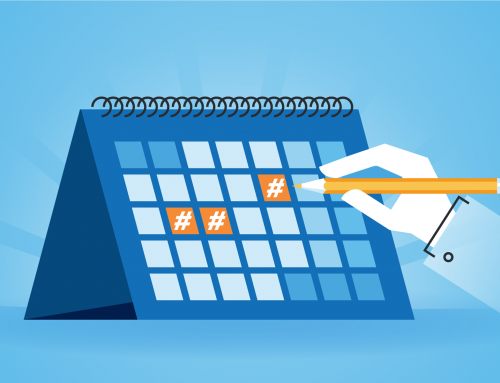MINIMUM VIABLE VS. MINIMAL
Do You Know The Difference with Local SEO?
Despite being publicly available to businesses and consumers for just shy of 30 years and despite dominating in areas of news, entertainment, advertising, and searches for products/services – the internet still remains under-utilized by many small to medium-sized businesses. I often see websites and online presence for businesses running at a minimal level or not at all. Surprisingly, though, it really doesn’t take significant effort to have a minimal viable website and local SEO established instead of a minimal online presence.
Minimal
adjective
1. of a minimum amount, quantity, or degree; negligible. Emphasis on negligible.
Minimum Viable Local SEO
noun
1. a version of a local SEO with just enough online presence to satisfy early customers and provide feedback for future local SEO development.
(A modified definition from Minimum Viable Product: a version of a product with just enough features to satisfy early customers and provide feedback for future product development.)
To keep this post simple, rather than dive into deep complexities of everything online/digital, we’re going to run with the manufacturing term “minimal viable product” and use a simple stool to illustrate the difference between minimal and something that can get an online presence started effectively for any business. And, because a website and marketing are never done, we’ll build off the concept of “feedback for future development” in this article.

WEBSITE
Every business online strategy begins with a well-branded website built and optimized for their ideal customers. While several methods are available to build a website, not all provide you with a viable website for today’s standards. For example, some sites still aren’t being built mobile-friendly. A travesty and complete disservice to businesses considering the majority of online traffic is through a mobile device. DIY platforms (like WIX or Weebly or hosting website templates) may save you some initial cost in getting a website built, but not all are search-friendly; meaning you’ll have a website, but it’s not easily found by the search engines. There’s also the issue of User Experience and how powerful it can be in converting traffic that comes to your website.
A minimal viable website should include:
- Strong Branding – Logos, colors, images, and content throughout – if consistent and well planned – are stellar representations of what you provide and who you are.
- Mobile-Friendly – Your website needs to respond to the size of device used by a visitor, providing them with an ideal user experience regardless of desktop, tablet, or mobile access.
- Clear Calls-to-Action (CTA) – Direct people to an action – BUY NOW, LEARN MORE, CALL TODAY, GET A QUOTE, etc – you feel best fits your target audience and best reflects the content viewed on the page.
- Landing Pages – Don’t send all your traffic to the home page. Build descriptive and clear CTAs on pages to help increase conversions.
- SEO Elements – Page title, target keywords, page description, balanced keyword density, ALT titles in images, and good content flow to help search engines determine your website’s relevance to searches for keywords relative to your business.
- Navigation – Website menus or buttons directing visitors need to be simple and clear to understand.
- Email – While not technically the website, it’s best practice to have an email address matching your website address.
Of course, at this point you’re looking at more of a thumbtack than a website, so we need to continue adding some legs.

GOOGLE MY BUSINESS
We did a survey recently across FB and Instagram, asking how people search for businesses, and the results were not a surprise.
There were two questions asked – prompted by a handful of small businesses asking me if they should advertise in the phone books anymore.
1. “Do you ever use a phone book to find a business?”
Responses:
Yes – 0%
No – 100%
2. “Which do you use to find a business?”
Responses:
Phone book online – 0%
Google Results – 100%
Ages of those who participated ranged from mid-20s to late-60s.
Simply put, how your business shows up online in the map results and in the Google Business Profile have significant impact in reaching consumers. Best part, a Google My Business (GMB) page is free to set up. Some of the essentials in optimizing your GMB are included in this previous article: Essential Optimizations to Help Your Local Business Get Found.
Beyond information you control and add to optimize your Google My Business, Google Reviews can help you stand out as consumers look to what others are saying about you.

SOCIAL MEDIA MIX
Whether you personally use social media or not, having a business presence to reach your target audience has its benefits. Depending on your industry, you’ll want to consider which social media platforms are best suited to connect with your ideal customers. Of course, your approach to social media can also be minimal or minimum viable (or maximized). If you’re just getting started, consider a mix of these activities on your Facebook, Instagram, YouTube, LinkedIn, etc. pages:
- First and foremost – Build a business page (not a personal page with your business name) on the applicable platforms. There are tools available in business pages essential to learning from your engagement efforts which are not available to a personal profile page.
- Share and Engage – Don’t always make it about what you’re selling. Write informative articles on your website and share links via your social media pages. Shoot simple videos with your phone or a camera and share them – directly to your social media pages and to YouTube. Post images of what you’re doing as a business: attending community events, recognizing employees, shipping product, etc. Share Stories (simple images or videos you can post and reach your current followers with information they need and/or to get them excited for repeat business with you) on Facebook, Instagram, and YouTube. Frequency of posting also depends on your audience. Would they be responsive to high frequency content, or is their customer journey a bit longer with more time leading up to or between purchases? Even if not a high-engagement platform, social media does aid with building search engine relevance as you post content from your website to your social media channels.
- Boost/Paid advertising – Helps you take content you know your customers engage well with (based on insights gathered) and target others based on demographics and interests you know your target audience is interested in. This creates an inexpensive means to increase brand awareness and – in some cases – generate sales.
We definitely have a stool now, but are still a bit lacking in terms of viability. To add to the minimum viable aspect of leading to more feedback for future development, there’s an important piece remaining to hold it all together.

STRATEGY
Your local SEO strategy is important in the beginning, but even more so in ongoing months. To maintain brand continuity, your strategy needs to be reflected across your website, in search engines, and on social media or other platforms your businesses is represented. Regularly reviewing the insights/feedback/analytics from each of your brand assets gives you vital information for advancing your online presence and successes. Whether you take this on yourself, have an employee take this on, or use a digital marketing agency to work with you on your strategy, here are some basic elements to starting and continuing your strategy:
FUTURE “PRODUCT” DEVELOPMENT
Naturally, the stool we’ve built is quite basic in its minimal viable product state. As you evaluate data and feedback, continue improving your messaging and adding other elements to your digital marketing efforts. In other words, you can take this three-legged stool and add a fourth leg for greater stability – maybe even build in a back rest and make it swivel. When you have the foundation of success built, you can continue innovating your messaging and improving your reach to potential customers. Here are some other areas to potentially develop in the future as you find success from the minimal viable online presence:
MONTHLY / QUARTERLY / ANNUAL REVIEWS
Periodically take a strong look at your brand identity and brand messaging. Consider amounts spent, ROI, increases in reach, conversion rates per campaign effort, website design on specific pages and throughout, and engagement from current and potential customers; identify areas for improvement and make plans to continuously improve. Monthly reports and meetings about marketing can cover successes in immediate campaigns, while quarterly should analyze trends in the industry search traffic compared to your own website traffic and re-tool where needed before pressing forward to the next quarter. Annual reviews are a great time to look on the far horizon and determine ahead what months/quarters could look like. Set goals and remove any foreseen obstacles before pressing forward – or at least get projects started to remove major barriers.
If you’re doing all the digital marketing in-house, having an outside audit by an digital marketing expert either quarterly or annually can help ensure you’re heading down the right path.






